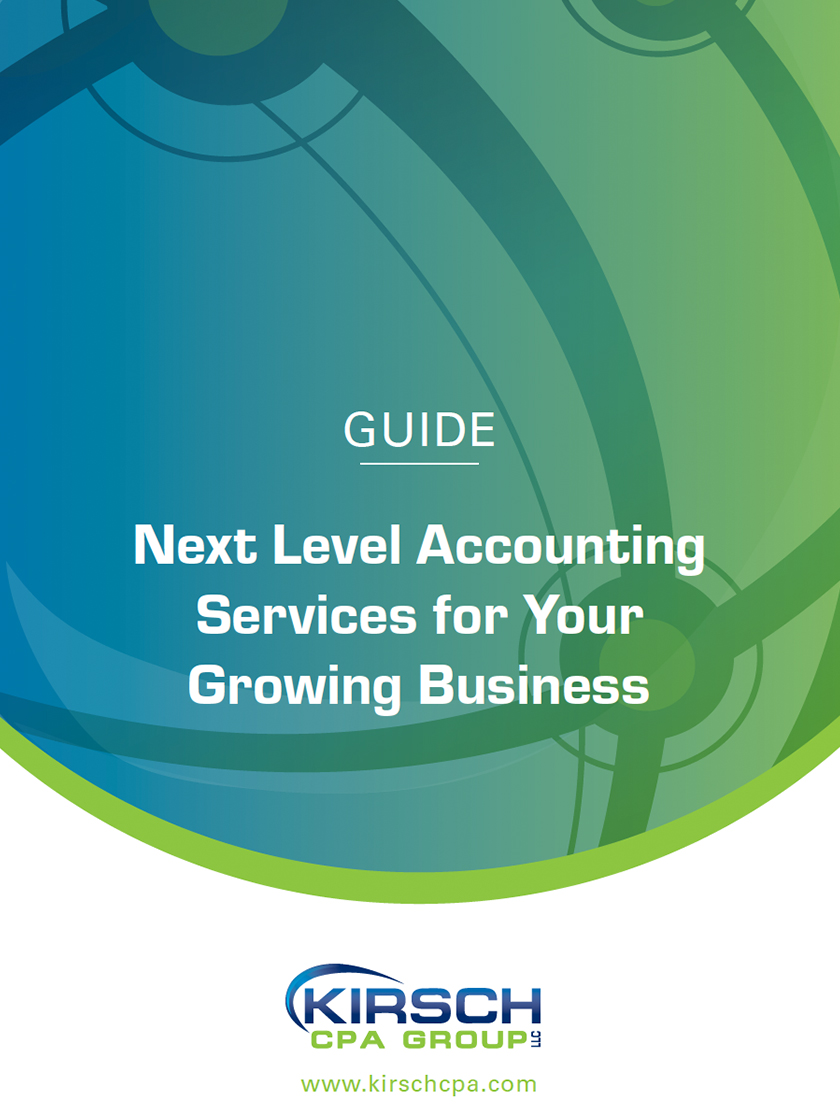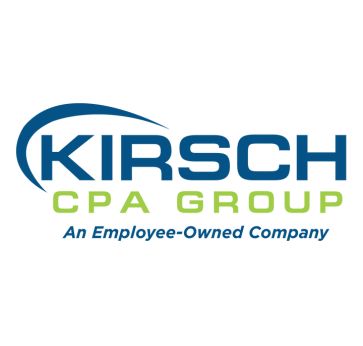Year-End Tax Planning Tips for Small Businesses
Oct 26, 2021

You still have time to significantly reduce this year’s business federal income tax bill even with all the uncertainty about proposed tax law changes. Here are five possible moves to consider — but stay tuned for developments. Congress is currently considering some major tax changes. If approved, it’s unclear when they will all take effect.
1. Claim 100% First-Year Bonus Depreciation for Last-Minute Asset Additions
Thanks to the Tax Cuts and Jobs Act (TCJA), 100% first-year bonus depreciation is available for qualified new and used property that’s acquired and placed in service in calendar year 2021. That means your business might be able to write off the entire cost of some or all of your 2021 asset additions on this year’s federal income tax return and maybe on your state return, too.
Consider making additional acquisitions between now and December 31. Contact your tax pro for details on the 100% bonus depreciation break and exactly what types of assets qualify.
However, if significant tax-rate increases are enacted for 2022 and beyond, you could be better off forgoing 100% first-year bonus depreciation and, instead, depreciating newly acquired assets over a number of years. If tax rates go up, those future depreciation write-offs could be worth more than a current-year 100% write-off.
Fortunately, you have until the deadline for filing your current-year federal income tax return — including any extension — to decide which course to take. If your business uses the calendar year for tax purposes, the extended filing deadline will be October 17, 2022, for sole proprietorships and C corporations. The extended deadline will be September 15, 2022, for partnerships, limited liability companies (LLCs) and S corporations. Extending your return may give you more flexibility to react to future tax developments.
2. Write Off New or Used Heavy SUV, Pickup or Van
The 100% bonus depreciation deal can have a major tax-saving impact on first-year depreciation deductions for new or used heavy vehicles used over 50% for business. That’s because heavy SUVs, pickups and vans are treated for federal income tax purposes as transportation equipment. In turn, that means they qualify for 100% bonus depreciation.
Specifically, 100% bonus depreciation is available when the SUV, pickup, or van has a manufacturer’s gross vehicle weight rating (GVWR) above 6,000 pounds. You can verify a vehicle’s GVWR by looking at the manufacturer’s label, which is usually found on the inside edge of the driver’s side door where the door hinges meet the frame. If you’re considering buying an eligible vehicle, placing one in service before year end could deliver a significant write-off on this year’s return.
However, if significant tax-rate increases are enacted for 2022 and beyond, you could be better off forgoing 100% first-year bonus depreciation and, instead, depreciating newly acquired assets over a number of years. You have until the deadline for filing your current-year federal income tax return, including any extension, to decide whether claiming 100% first-year bonus depreciation is a good idea.
3. Manage Current-Year Business Income and Deductions
If your business operates as a pass-through entity — such as a sole proprietorship, S corporation, partnership or LLC taxed as a partnership — your shares of various tax items are accounted for on your personal return and net income is taxed at your personal federal income tax rates.
As year-end approaches, if you expect to be in the same or lower federal income tax bracket in 2022 than you are in 2021, the traditional strategy of deferring taxable income into next year while accelerating deductible expenditures into this year makes sense. Deferring income and accelerating deductions will, at a minimum, postpone part of your tax bill from 2021 until 2022.
On the other hand, if you expect to be in a higher tax bracket in 2022 than you are in 2021, accelerate income into this year (if possible) and postpone deductible expenditures until 2022. That way, more income will be taxed at this year’s lower rate instead of next year’s higher rate.
4. Maximize the Deduction for Pass-Through Business Income
The deduction based on an individual’s qualified business income (QBI) from pass-through entities is a key element of the TCJA. The deduction can be up to 20% of a pass-through entity owner’s QBI, subject to restrictions that can apply at higher income levels and another restriction based on the owner’s taxable income.
For QBI deduction purposes, pass-through entities include:
- Sole proprietorships,
- Single-member LLCs that are treated as sole proprietorships for tax purposes,
- Partnerships,
- LLCs that are treated as partnerships for tax purposes, and
- S corporations.
You can also claim the QBI deduction for up to 20% of qualified REIT dividends and up to 20% of qualified income from publicly traded partnerships.
Because of the limitations on the QBI deduction, year-end tax planning moves (or lack thereof) can increase or decrease your allowable QBI deduction. For instance, year-end moves that reduce this year’s taxable income can have the unanticipated negative side effect of reducing this year’s QBI deduction. Work with your tax pro to optimize your results.
5. Establish a Tax-Favored Retirement Plan
If your business doesn’t already have a retirement plan, now might be the time to take the plunge. Current retirement plan rules allow for significant deductible contributions.
For example, if you’re self-employed and set up a SEP-IRA, you can contribute up to 20% of your self-employment earnings, with a maximum contribution of $58,000 for 2021. If you’re employed by your own corporation, up to 25% of your salary can be contributed to your account, with a maximum contribution of $58,000. If you’re in the 32% federal income tax bracket, making a maximum contribution could cut what you owe Uncle Sam for 2021 by a whopping $18,560 (32% times $58,000).
Other small business retirement plan options include:
- 401(k) plans, which can even be set up for just one person (also called solo 401(k)s),
- Defined benefit pension plans, and
- SIMPLE-IRAs.
Depending on your circumstances, these other types of plans may allow bigger deductible contributions.
Thanks to a change made by the 2019 SECURE Act, tax-favored qualified employee retirement plans, except for SIMPLE-IRA plans, can now be adopted by the due date (including any extension) of the employer’s federal income tax return for the adoption year. The plan can then receive deductible employer contributions that are made by the due date (including any extension), and the employer can deduct those contributions on the return for the adoption year.
Important: The SECURE Act provision didn’t change the deadline to establish a SIMPLE-IRA plan. It remains October 1 of the year for which the plan is to take effect. Also, the SECURE Act change doesn’t override rules that require certain plan provisions to be in effect during the plan year, such as the provisions that cover employee elective deferral contributions (salary-reduction contributions) under a 401(k) plan. The plan must be in existence before such employee elective deferral contributions can be made.
For example, the deadline for setting up a SEP-IRA for a sole proprietorship business that uses the calendar year for tax purposes and making the initial deductible contribution for the 2021 tax year is October 17, 2022, if you extend your 2021 tax return. The deadline for the contribution for your 2021 tax year is also October 17, 2022. However, to make a SIMPLE-IRA contribution for the 2021 tax year, you must have set up the plan by October 1. So, you might have to wait until next year if the SIMPLE-IRA option is appealing.
While you have until next year to establish a tax-favored retirement plan (except for a SIMPLE-IRA plan), why wait? Get it done this year as part of your year-end tax planning. Contact your tax pro for more information on small business retirement plan alternatives. Be aware that, if your business has employees, you may have to make contributions for them, too.
Stay Tuned
In May, the U.S. Department of Treasury released its “Green Book,” which contains Biden administration proposals. More recently, the House Ways and Means Committee released proposed legislation that includes some of President Biden’s proposals, while tweaking and eliminating other changes proposed in the Green Book.
These proposed tax law changes include increased individual and business tax rates for some taxpayers, higher capital gains tax rates for high-income individuals, elimination of (or reductions in) certain tax breaks and much more. They have been met with opposition from Republicans and some Democrat lawmakers. So, it’s currently uncertain which proposed changes, if any, will become reality.
For the latest developments, keep an open line of communication with Kirsch CPA Group. Depending on what happens in the coming months, your business should be ready to make last-minute tax planning moves right up until December 31.
We can help you tackle business challenges like these – schedule an appointment today.
© Copyright 2021. All rights reserved.
Sign Up for Email Updates
Accounting & Financial News

Audits Are Essential to Your Organization’s Health
Audits have become more important due to increased public and government scrutiny of not-for-profit organizations, their management…

Tax Update: What the “One Big Beautiful Bill” Means for You
On July 5, President Trump signed the One Big Beautiful Bill Act (OBBB) into law—a sweeping tax…




